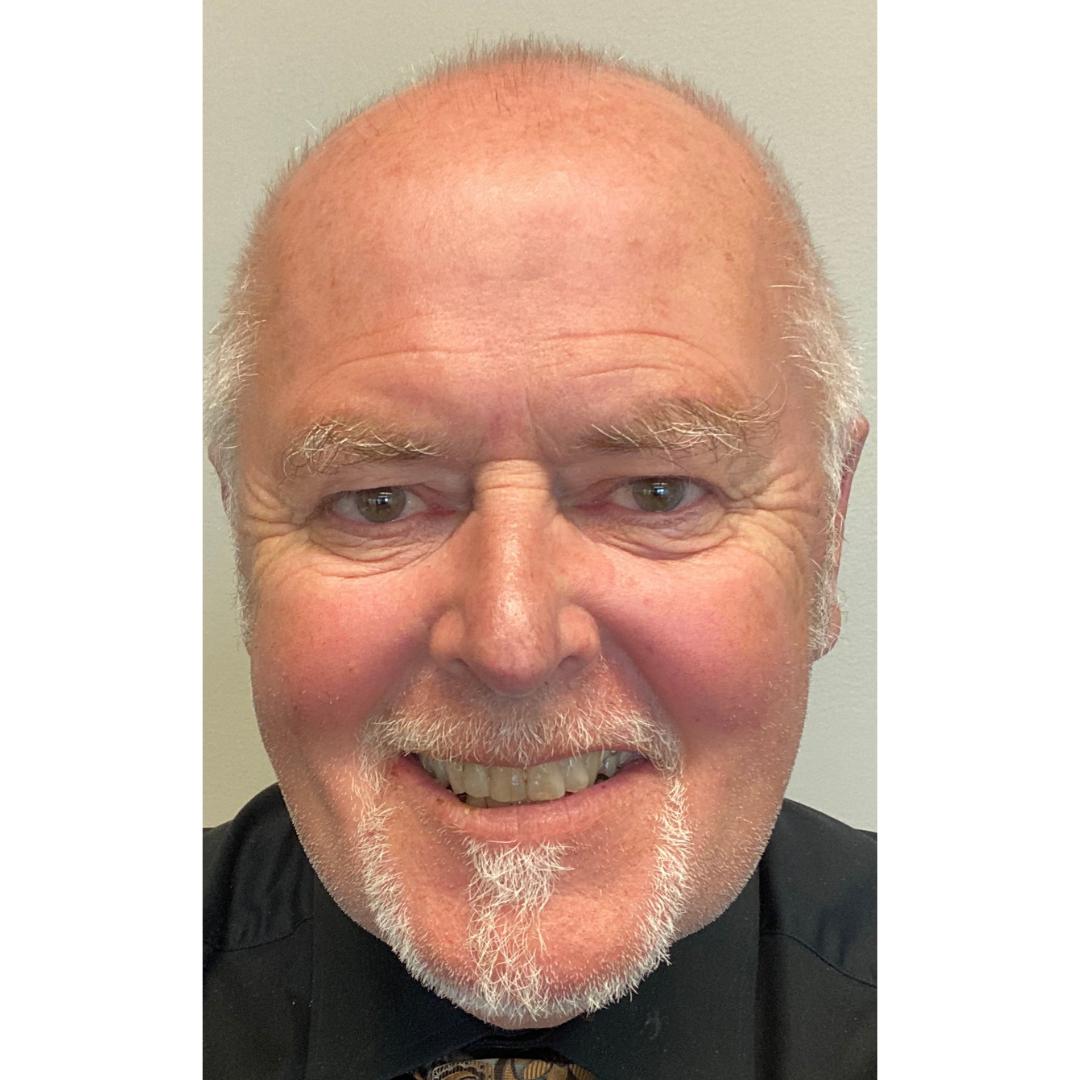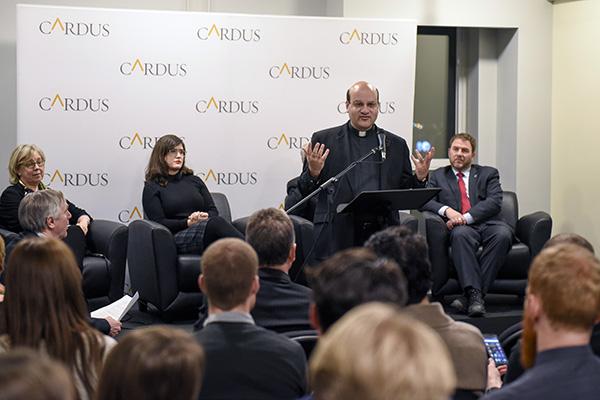I was a little more than 40 years old when the truth of how societies change was revealed to me by, of all people, a very sophisticated Quebec separatist. At the time, I was wandering the townships of Quebec to research a lengthy backgrounder for The Calgary Herald—which had assigned me to the Parliamentary Press Gallery—concerning Quebec's upcoming 1995 referendum on sovereignty. I no longer recall the fellow's name and am far too lazy to dig back through my files to find it, but he was quite clear that regardless of the outcome, his cause would continue.
"Separation," he said, "is not a moment. It is a process."
For a journalist—someone trained to cover "moments" and "events"—this was a revelation that altered how I viewed the world around me. Since then, I have tended to see each "moment" as simply part of a more important process. This does not mean that moments are not significant—of course they are—but it does mean that they are either the outcome or genesis of a process most of us are oblivious to. Moments, in other words, are when the process is unveiled.
This means that somewhere along the line each of us participates in the process of cultural change either through our initiative, our acquiescence or our ignorance. We encourage, oppose or ignore and—with the exception of those known colloquially as "Burkean nutbars"—eventually adapt to and accept the new social norms. Even those oblivious to the process they are participating in—those who insist they have not taken a position—have in fact done so. As often as not, those who don't decide are the ones who do decide.
So it is that a dozen or more years later when the City of Calgary unveiled its Centre City Plan—a bold urban planning document outlining a dramatic and, overall, highly attractive new vision for the city's core—that we noticed a fundamental shift in the ambitions of modern living not by what the plan contained but by what it excluded.
In the wake of our Toronto the Good study of the impact of faith institutions, Cardus decided to launch a similar line of urban inquiry in Calgary. An initial one-day session in September 2008 featured an eclectic gathering of the secular and faith worlds. The morning lecture was led by Eric Jacobsen, author of Sidewalks in the Kingdom: New Urbanism and the Christian Faith. The afternoon session was led by well-known Calgary architect Peter Burgener, of BKDI Architects, and focused on the physical architecture surrounding institutions of faith (almost all of them have "pointy things" on top). It was in the course of that day and through Cardus President Michael Van Pelt's thorough reading of the Centre City Plan that something of significance was discovered.
At least we thought so.
The Centre City Plan had ambition and accommodation for everything one would expect in a vibrant modern city—theatres, shops, offices, residences, public buildings, public space, massage parlours, spas—except for institutions of faith. Barely a mention was made of the edifices that since the dawn of civilization have stood at the centre of the world's societies. How, I thought, could this have happened? Had we not just heard Peter Burgener describe how in all the world's cities—great and small—there is a temple, a mosque, a synagogue, shrine or cathedral embedded in their cores as if it were the bedrock upon which those civilizations were built? Was Calgary really intent on building a new city (the Centre City Plan envisages creating room for as many as 70,000 new "core" residents over the next 25 years), oblivious to the presence and role of institutions of faith? Had the once-welcome concept of secularism been so perverted that the public square, instead of being a place where people of all faiths and traditions gather, no longer had room for those who had urged its creation? To me, whether or not this was the intention, it appeared to be the outcome. The authors of the document almost certainly had never made a decision to exclude faith. But when the document excluded faith, they had decided.
As I had written a few weeks earlier in The Globe and Mail:
"Calgary is at risk of what is described by Pier Giorgio Di Cicco, in his book Municipal Mind: Manifestos for the Creative City, as a 'failure of heart' or becoming merely 'a place of business, or indentured servitude.' It's not likely that Calgary could lose its soul, although it is quite possible it could sell it by mistake.… A city this well-resourced should be able to respond to even these nuanced challenges by releasing its creative minds to give liberty to, as Mr. Di Cicco calls it, 'the desire of the citizen for elements one no longer dares to ask for—conviviality, joy, delight in wonder, the shared forum of imagining and play, of unreserved laughter and serenity... all the playful and ecstatic registers that justify city life."
Where, I thought now, would "conviviality, joy, delight in wonder" come from in a city without recognition of the role played by those institutions that harbour the revolutionary truth that there is more to our existence than that which we can see? Was faith an element "one no longer dares to ask for"?
But we are practical people and understand that these are not concepts immediately available to everyone. Nor, we agreed, is it appropriate to answer our own questions based solely upon assumptions. If change were to be required, or even inspired, it would be necessary to gather the appropriate empirical data. So it was that Phase One of our Centre City Soul project—an audit of existing institutions of faith and the services they offer within the civic core—was launched. This was not easy in the midst of a deep recession, and it wasn't until a year later that we were able to access the resources to move forward.
The audit of existing faith institutions was completed in October 2010 and it outlined a typically aging but nevertheless productive urban core of faith institutions that—with the exception of a single Buddhist temple—was dedicated exclusively to Christian institutions.
It was important, given that we were—and are—working in a secular environment and seeking to debate and influence municipal planning policy, to avoid an exclusively Christian prejudice in our pursuits. So the results of Phase One raised sociological questions beyond "church." It was becoming apparent that the City of Calgary was, more or less, following the pattern of other Canadian municipalities in that certain assumptions were being made regarding the location of institutions of faith, whether they be churches, mosques, synagogues or temples. Almost all of the new structures—notably the massive First Alliance church and the Baitan Nur mosque (North America's largest, opened by the prime minister in 2008) were being built toward the physical fringe (metaphors abound) of the city.
First Alliance, for instance, is smack dab in the middle of an industrial park where, while parking may be in bountiful supply, homes are not. There are no sidewalks in that Kingdom, Though it plays a vital role for its faithful, it is completely bereft of the physical presence within the community that is stirringly obvious in the case and sense of, say, St. Patrick's Cathedral in New York or Temple Square in Salt Lake City.
In Calgary and many other modern planning environments, faith was accommodated but it was not central. Nor was an understanding evident of the vital role our most deeply held beliefs play in influencing our urban aesthetic.
Perhaps even more pertinent in a sociological and secular political sense, newcomers of growing faiths such as Islam and Sikhism were going to be restricted to the suburban edges of the city. Calgary's planning documents were treating faith as a private matter for which space would be provided but not as a public good or inspiration that could be shared within the heart of our city and, therefore, our society.
With this in mind, we found support from the Calgary Foundation for Phase Two once we were able to convince the Foundation that while we are Christians, we were also men and women perfectly capable of networking through other faiths and engaging in multi-faith study and dialogue. A request for proposals was made and a contract awarded to the Arlington Group—an established urban consultancy firm that was fascinated by the uniqueness of the matter we at Cardus were asking them to study.
Their study, released to a packed house of all faiths in early October 2011 at Calgary City Hall, was summarized by Ray Pennings in a Calgary Herald op-ed:
"In an address to the Yale School of Architecture, Toronto's former poet laureate, Pier Giorgio Di Cicco, put it this way: 'The principles of sacred space are: the elicitation of wonder; the imperative of stillness; the benevolent connotation of forces that nurture, gentle and release.'
"The onus in the 21st century will not be diversity of culture but diversity of spirituality.… It will behoove the architect, the planner, to design public space that mediates the spiritual instinct to communality and transcendence. The communing of streetscape, landscape, building, skyline, enjoins the citizen to commune with projects and entities and re-establishes trust with others.… The effect of architecture and space on the entire person, in the advent and presence of other persons, is universal. It gentles the civic creature. It can gentle disparate cultures and peoples by the vocabulary of the sublime, bringing them to the point of awe, gratitude and mutuality by shared space, making such space sacred.
"These are the structures that nurture people's most deeply held beliefs, sanctify their lives' most vital relationships and comfort their deepest pains and most profound sorrows. And, even for those who do not share their faith, they act, as the Arlington Group's report for Cardus articulates, as incubators of commonly held social virtues. Similar to the aesthetic influence of the arts on a community, their impact on the culture that surrounds them is felt and is of benefit to even those who never, or rarely, enter them.
"The full report, available on the Cardus website, confirms that, as C.S. Lewis said, 'The church is the only organization that exists for the benefit of nonmembers.' "
Now, it is important to point out that at every stage in this process, members of the city council and public service were extremely co-operative and, to the extent that they could be within the bounds that govern them, supportive and encouraging. We had kept them in the loop regarding our study and our plans for the publicity surrounding it. We did not want our recommendations to appear as if they were "demands" to be made to "right the wrongs" of an "anti-religious" bureaucracy or any other crazy talk like that. The fact of the matter is that when it came to faith, the Centre City Plan and Calgarians just missed it. And we missed it because of the soft shifts in our culture in the previous 20 years that made people hesitant to raise the issue of faith.
Essentially, no one wants to be the guy at the corporate meeting to raise his hand and say "what about faith?" It had become unfashionable—even risky—hadn't it?
As for the faith community, it too had "just missed it" because those who work within its infrastructure are—quite rightly—preoccupied with work at their churches, synagogues, mosques and temples. They had not the time, resources or expertise to engage in a civic planning process. This is how silent voices change the world.
Yet as word of the Cardus study spread through the clerical community and beyond to others who "get it," consensus and momentum built—almost as if unseen forces were at play. Influential voices finally found the stage upon which it was free to speak what had been unspoken. And our world began to change.
The City has now initiated the processes it will follow to consider reforming the Centre City Plan so that it reflects the vital role institutions of faith play within society. A public consultation—again with a packed house—was held at City Hall in early February. Recommendations will eventually be made to council. Cardus is moving toward Phase Three, in which we hope to expand our study beyond the city centre and into practical areas such as parking bylaws in suburbia.
Public recognition of the role of faith in our society was not, is not, and hopefully will not be chased from the public square in a "moment."
Faith is not killed violently. It is suffocated, slowly, by the withheld breath of the voices that remain silent






